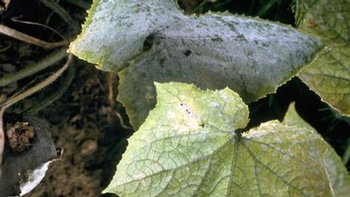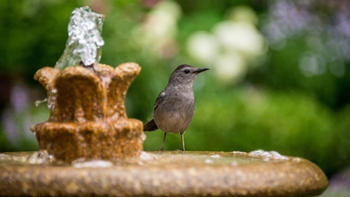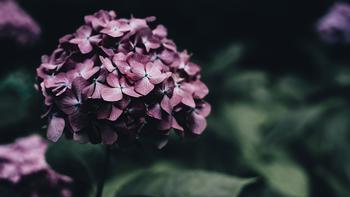Summer 2024
Gardener's checklist for summer
JUNE

- Check soil moisture and adjust the watering schedule on your irrigation controller accordingly. Water early in the day. Watch container plants which may need daily watering.
- Control powdery mildew, a fungus that likes dry summer conditions. Spray susceptible plants with a horticultural oil or biological fungicide.
- Use pot feet or boards to elevate containers sitting on hot pavement.
- Don’t forget to water houseplants as your attention focuses on the outdoors.
- Check for standing water to keep mosquitoes from breeding.
- Treat ponds with mosquito repellent.
- Turn compost and keep it as moist as a wrung-out sponge. Add garden waste, grass clippings, pruning material, and leaves so long as they are not diseased.
- Raise the cutting height of lawnmower 1 to 1.5 inches to help grass survive drought and heat (encourages deep roots and reduces water demand).
- Leave lawn clippings on the ground for nutrients and as a mulch layer. Learn more about lawn care.
Planting and propagating
- Cut off spent flowers for continued bloom. (Consider leaving some for the birds.)
- Stake tall plants such as dahlias, gladiolus, and lilies as needed.
- Harvest blooming lavender to dry for indoor use.
Pests and weeds
- Monitor and control snails, slugs, and aphids.
- Use beneficial nematodes to manage grubs in your lawn.
- Keep an eye out for early signs of insect infestation - blast any you see with a garden hose.
- Set yellowjacket traps at the perimeter of the yard (not near eating areas) to discourage yellowjackets from visiting.
Feed and fertilize
- Make compost tea for a mild liquid fertilizer.
- Mulch shrubs and beds to conserve moisture.
- Fertilize roses and other summer-blooming plants, if needed, using an organic fertilizer.
- Use little or no fertilizer on herbs.
- Feed azaleas, camellias, and rhododendrons with a balanced organic fertilizer formulated for acid-loving plants monthly during the spring and summer.
Edibles
- Thin fruit trees.
- Thin fruit on apple trees.
- Protect summer fruit crops with netting or row cover.
- Plant beans, broccoli, chard, cucumbers, eggplant, ground cherries, melons, peppers, pumpkins, parsley, squash, tomatoes
- In cooler areas, plant cabbage, celery, lettuce, bunching onions, and peas.
- Learn more about crops to plant in June and other activities in the edible garden.
JULY

- Monitor soil moisture. The water requirements of plants peaks in July. Established perennials, shrubs, and trees need infrequent but deep watering. Container plants may need daily watering. Learn more about irrigation.
- Adjust watering schedules monthly, according to the weather and changing needs of your plants.
- Mulch garden and vegetable beds to protect them from summer heat, reduce watering needs, and keep the weeds down.
- Lightly fertilize summer growing succulents if needed, such as Agave and Echeveria. Learn more about caring for succulents. Cactus and succulents are drought tolerant, but many appreciate some water in very hot weather. Succulents may find full sun to be too strong in some locations, so provide them with some shade if they appear to be struggling.
- Drain standing water from saucers to eliminate mosquito breeding grounds.
- Treat ponds with mosquito repellent.
- Provide a water source such as a bird bath for thirsty birds and bees.
- Raise the cutting height of lawnmower 1 to 1.5 inches to help grass survive drought and heat (encourages deep roots and reduces water demand).
- Leave lawn clippings on the ground for nutrients and as a mulch layer. Learn more about lawn care.
Pests and weeds
- Control powdery mildew, a fungus that likes dry summer conditions. Spray susceptible plants with a horticultural oil or biological fungicide. Follow package directions.
- Monitor whiteflies — use sticky traps, thin out dense branches for air circulation, and use earth worm castings to discourage them. Using a reflective mulch or strips of foil will help repel them.
- Check shade shrubs for thrips.
- Check fuchsias for fuchsia mite. If found, cut back 6 inches beyond the infected site.
- Set yellowjacket traps at the perimeter of the yard (not near eating areas) to discourage yellowjackets from visiting.
Planting and propagating
- Pinch off spent flowers on perennials and annuals to encourage repeat bloom.
- Pinch back chrysanthemums to encourage branching and increased bloom. Leggy impatiens and coleus also benefit from being pinched back.
- Dig up and divide overcrowded bearded irises.
- Dig up overcrowded bulbs after the foliage dies. Store bulbs in a cool, dry place for replanting in fall.
Feed and fertilize
- Feed azaleas, camellias, and rhododendrons with a balanced organic fertilizer formulated for acid-loving plants.
- Feed container plants if needed, using an organic fertilizer.
- Feed citrus if needed, using an organic fertilizer.
Edibles
- Plant beans and summer squash.
- In cooler areas, plant broccoli, cabbage, chard, collard greens, kale, lettuce, bunching onions, and peas.
- Learn more about crops to plant in July and other activities in the edible garden.
Fire-smart Landscaping
- Move wood mulch 5 feet or more away from the perimeter of your home and any other structures on your property. Place non-combustible mulch in that area instead.
- Learn more about Fire-smart Landscaping.
AUGUST

- Monitor soil moisture. Established perennials, shrubs and trees need infrequent but deep watering. Container plants may need daily watering.
- Adjust watering schedules monthly, according to the weather and changing needs of your plants.
- Check mature plants to be sure they are not water-stressed. Your 30+ year old plants are valuable!
- Container plants may need daily watering, as soil in pots can dry out quickly and damage plant roots on hot summer days.
- Treat ponds with mosquito repellent and empty containers with standing water.
- Raise the cutting height of lawnmower 1 to 1.5 inches to help grass survive drought and heat (encourages deep roots and reduces water demand).
- Leave lawn clippings on the ground for nutrients and as a mulch layer.
Planting and propagating
- Choose drought tolerant plants that attract butterflies. Remember to plant some for nectar like Lantana (adults) and some for feeding like native milkweed (Asclepias fascicularis), Ceanothus, Buckwheat (Eriogonum), or dill (caterpillars). Note: do not plant milkweed if you are within 5 miles of the coast. Learn more about pollinators.
Cutting and pruning
- Prune hydrangeas after blooms fade.
- Pinch off spent flowers on perennials and annuals to encourage repeat bloom.
- Maintenance prune coniferous trees: yews, junipers, redwoods and cypress.
Pests and weeds
- Monitor for spider mites by looking for fine webbing on plants. Minimize the chance of infestation by rinsing dust and dirt off leaves with a spray of water.
- Set yellowjacket traps at the perimeter of the garden (not near eating areas) to discourage yellowjackets from visiting.
Feed and fertilize
- Feed azaleas, camellias and rhododendrons with a balanced organic fertilizer formulated for acid-loving plants.
- Feed container plants if needed, using an organic fertilizer.
- Feed citrus if needed, using an organic fertilizer.
Edibles
- Plant broccoli, cabbage, cauliflower, celery, chard, and bunching onions.
- In cooler areas, plant collard greens, kale, lettuce, and peas.
- Learn more about crops to plant in August and other activities in the edible garden.
Fire-smart Landscaping
- Keep the landscape hydrated during hot, windy days, but don’t over water on Red Flag Days because it depletes water our fire departments need.
- Learn more about Fire-smart Landscaping.
